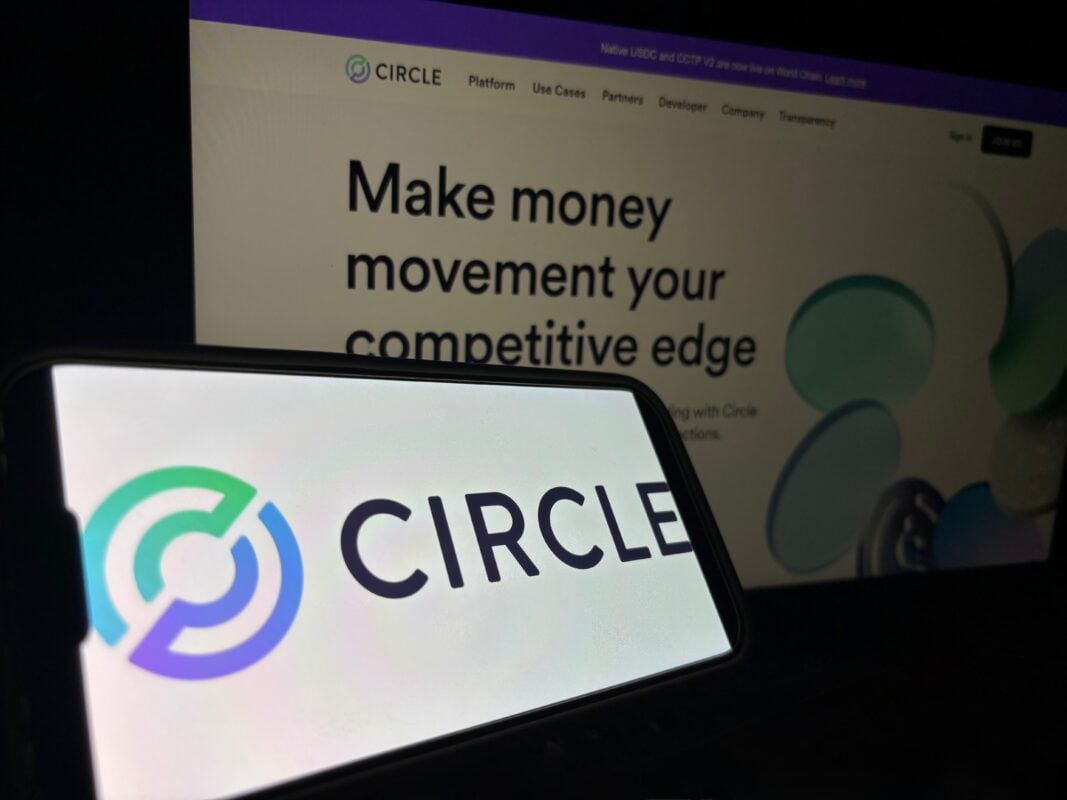TLDR
- William Blair rates Circle “outperform” as stablecoins enter commercial use.
- USDC supply may reach $220B by 2027, capturing one-third of the market.
- Stablecoins could cut international transaction costs by up to 90%.
- Circle’s Arc and Payments Network expected to drive new revenue streams.
Analysts believe Circle Internet Group is positioned to lead a major transition in global payments. With stablecoins gaining acceptance beyond crypto trading, experts say Circle’s USDC could replace traditional currency in the $20 trillion cross-border payments market. New research from William Blair and Bernstein suggests Circle is entering a new growth phase, backed by expanding regulation and real-world adoption.
Analysts Identify Circle as Key Stablecoin Innovator
William Blair has begun coverage of Circle Internet Group (CRCL) with an “outperform” rating, citing the company’s growing role in the stablecoin ecosystem. The firm said Circle stands at the forefront of what it described as a “seismic shift” in global finance.
According to its report, USDC is positioned to “supplant fiat currency for cross-border commerce” as regulatory frameworks and new payment infrastructure support faster, low-cost digital settlements.
The report estimates the global cross-border business payments market at around $20 trillion, presenting a large addressable opportunity for Circle. Analysts said the company’s technology and compliance-first approach could help bridge the gap between traditional financial systems and blockchain-based settlement networks.
Expansion Through New Payment Products and Network Growth
Circle’s current revenue model depends mainly on interest earned from USDC reserves. However, analysts expect that to change as the company develops new blockchain and payment infrastructure. William Blair pointed to upcoming platforms such as Arc, a blockchain designed for stablecoin-based finance, and the Circle Payments Network as potential long-term revenue sources.
The firm’s report suggested that as adoption of stablecoin payments scales, these products could support tens of billions of dollars in transaction-based revenue. This shift could move Circle from a reserve-interest model toward a more diversified and transaction-driven business.
Market Forecasts Show Strong Growth in USDC Supply
Bernstein Research released a similar outlook, forecasting that USDC’s supply could nearly triple by the end of 2027 to about $220 billion. This would give Circle close to one-third of the global stablecoin market. Bernstein said Circle’s advantage lies in its regulatory compliance, liquidity management, and strategic integrations with major partners such as Coinbase, Binance, Fiserv, and Corpay.
The research also emphasized that Circle’s alignment with the new U.S. stablecoin regulatory framework will support institutional and commercial adoption. Analysts said these partnerships and compliance standards would help position USDC as a reliable instrument for global payment use cases.
Stablecoins Seen as Next Phase of Digital Finance
A companion whitepaper from William Blair stated that stablecoins could reduce international transaction costs by as much as 90%. The report described stablecoins as the “digital cash infrastructure of the internet,” suggesting that they could enable faster and cheaper payments across borders. Both Blair and Bernstein noted that Circle’s role as a U.S.-regulated issuer strengthens its position in this evolving market.
Circle’s stock, listed under the ticker CRCL, closed on Tuesday at $134.36. The company went public in June and briefly reached a high near $300 after the passage of the GENIUS Act, which set a federal framework for payment stablecoins.
William Blair also maintained an “outperform” rating on Coinbase (COIN), citing the company’s partnership with Circle as a long-term advantage. The firm said Coinbase benefits from every USDC in circulation and could see lasting growth through its role in decentralized finance via the Base network.






